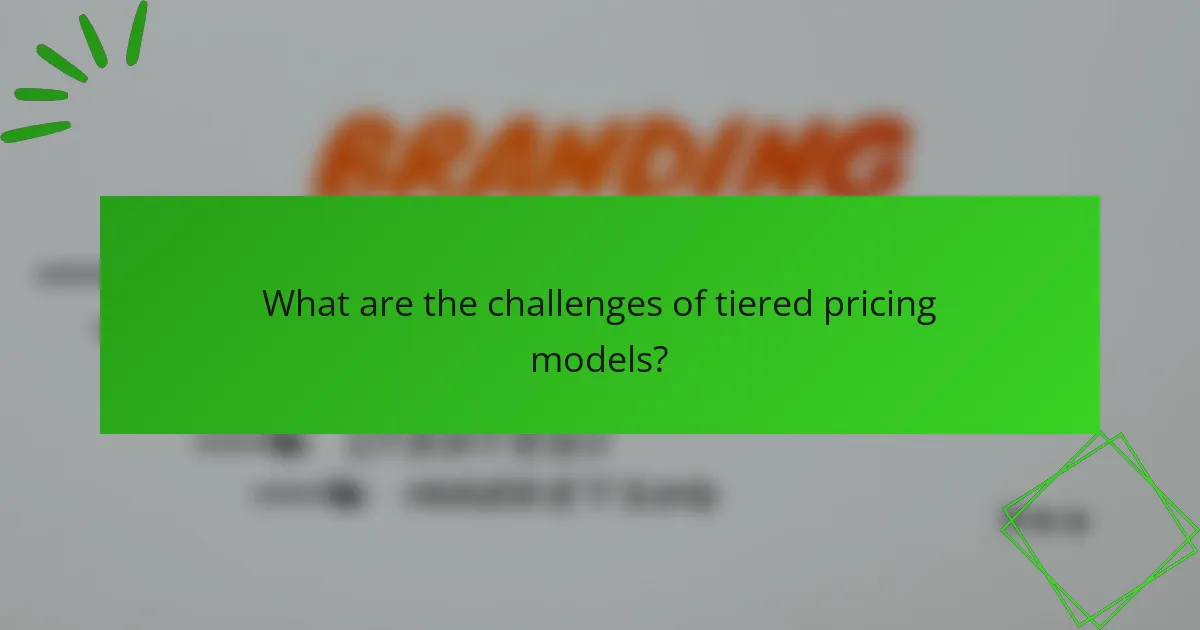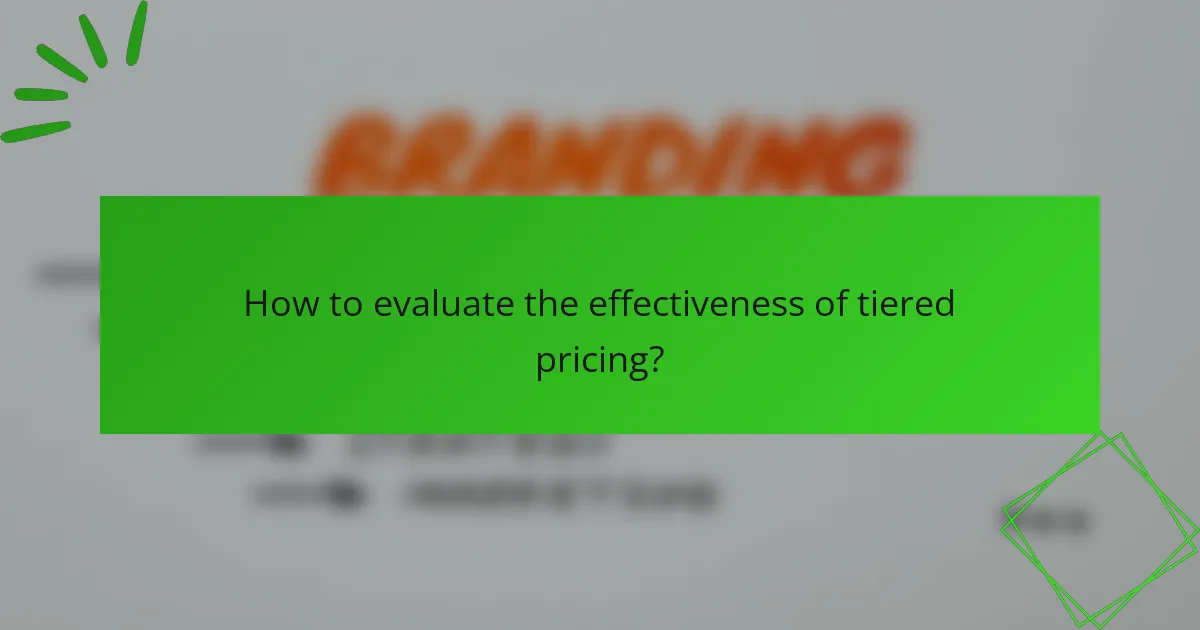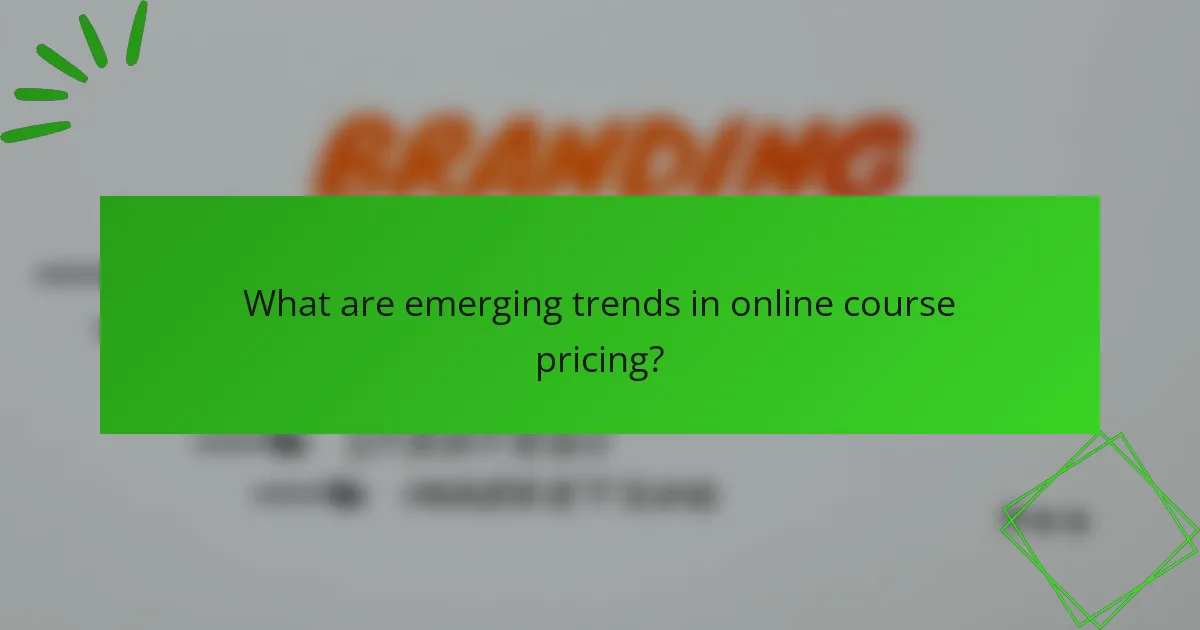Tiered pricing models for online courses provide a strategic approach to offering varying levels of access and features at different price points. This model not only maximizes revenue potential but also enhances customer satisfaction by catering to diverse learner needs and budgets. By implementing tiered pricing, educators can effectively reach multiple customer segments while delivering value across all tiers.

What are tiered pricing models for online courses?
Tiered pricing models for online courses involve offering different levels of access or features at varying price points. This approach allows educators to cater to diverse learner needs and budgets while maximizing revenue potential.
Definition of tiered pricing
Tiered pricing is a strategy where products or services are offered at multiple price levels, each providing different features or benefits. In the context of online courses, this can mean basic access to course materials at a lower price, while higher tiers may include additional resources, personalized support, or exclusive content.
This model encourages learners to choose a package that best fits their needs, potentially increasing overall satisfaction and engagement with the course material.
Common structures in Australia
In Australia, tiered pricing models often feature three to four levels, such as basic, standard, and premium. The basic tier might include access to recorded lectures, while the premium tier could offer live Q&A sessions, one-on-one coaching, and downloadable resources.
Pricing can vary widely, typically ranging from AUD 50 for basic access to AUD 500 or more for comprehensive packages. This structure allows course providers to attract a broader audience while catering to varying financial capabilities.
Examples of platforms using tiered pricing
Several online learning platforms successfully implement tiered pricing models. For instance, platforms like Udemy and Coursera offer courses at different price points, often with additional features for higher tiers, such as certificates or mentorship.
Another example is LinkedIn Learning, which provides a subscription model where users can access various courses at a monthly fee, with additional benefits for premium subscribers. These examples illustrate how tiered pricing can enhance user experience and drive revenue.

What are the benefits of tiered pricing models?
Tiered pricing models offer several advantages, including maximizing revenue, enhancing customer satisfaction, and improving course accessibility. By providing different pricing levels, businesses can cater to diverse customer needs and budgets, ultimately driving more sales.
Increased revenue potential
Implementing tiered pricing can significantly boost revenue by attracting a wider range of customers. For instance, offering basic, standard, and premium course packages allows customers to choose based on their willingness to pay, which can lead to higher overall sales.
Consider setting price points that reflect the value added at each tier. For example, a basic course might cost around $50, while a premium version with additional resources could be priced at $150 or more. This strategy can capture both budget-conscious learners and those seeking comprehensive learning experiences.
Enhanced customer satisfaction
Tiered pricing enhances customer satisfaction by providing options that align with individual preferences and needs. Customers appreciate the ability to select a package that best fits their learning goals and financial situation.
To maximize satisfaction, ensure that each tier offers clear benefits. For example, the standard tier could include access to live Q&A sessions, while the premium tier might offer one-on-one coaching. This clarity helps customers feel confident in their purchasing decisions.
Improved course accessibility
By offering multiple pricing tiers, course providers can make education more accessible to a broader audience. Lower-priced options can attract learners who may not have the financial means for more expensive courses, thereby increasing overall enrollment.
Consider implementing scholarships or discounts for specific groups, such as students or low-income individuals, within your tiered pricing structure. This approach not only enhances accessibility but also fosters a positive reputation for your brand as an inclusive learning provider.

How to implement tiered pricing for online courses?
Implementing tiered pricing for online courses involves creating different pricing levels based on the features or access provided. This strategy allows educators to cater to various customer segments, maximizing revenue while offering value at each tier.
Steps for implementation
Start by defining the tiers based on the value you provide, such as basic, standard, and premium options. Each tier should offer distinct features, like access to additional resources, personalized support, or exclusive content.
Next, analyze your target audience to understand their willingness to pay and preferences. Conduct surveys or gather feedback to tailor your offerings effectively. Finally, set clear pricing for each tier, ensuring that the perceived value justifies the cost.
Tools for managing pricing tiers
Utilize online course platforms like Teachable, Thinkific, or Kajabi, which offer built-in features for tiered pricing management. These platforms allow you to easily create and modify pricing structures while tracking sales and user engagement.
Additionally, consider using payment processors like Stripe or PayPal that support subscription models, enabling seamless billing for recurring payments. Integrating these tools can simplify the management of your pricing tiers and enhance user experience.
Case studies of successful implementations
One notable example is Coursera, which offers tiered pricing for its courses, allowing users to access free content or pay for certificates and additional resources. This model has attracted millions of learners while generating substantial revenue.
Another example is MasterClass, which provides a subscription model with tiered access to various courses. By offering different pricing levels, they cater to diverse audiences, resulting in a successful business model that promotes continuous learning.

What are the challenges of tiered pricing models?
Tiered pricing models can lead to several challenges that may hinder their effectiveness. Key issues include customer confusion, price perception problems, and technical difficulties during setup.
Customer confusion
Customers may struggle to understand the differences between various pricing tiers, especially if the features or benefits are not clearly defined. This confusion can lead to decision paralysis, where potential buyers hesitate to make a purchase due to uncertainty.
To mitigate this, provide clear comparisons and visual aids, such as tables or charts, that outline what each tier offers. Simplifying the language and avoiding jargon can also help customers grasp the value of each option.
Price perception issues
Price perception can be skewed in tiered pricing models, as customers may focus on the highest tier and perceive it as overpriced. This can lead to a negative view of the entire pricing structure, even if lower tiers offer good value.
To address this, consider anchoring the highest tier’s price with a compelling value proposition. Highlighting the benefits of mid-range options can also encourage customers to choose them over the most expensive tier.
Technical difficulties in setup
Implementing a tiered pricing model can present technical challenges, such as integrating it with existing systems or ensuring that the pricing structure is correctly displayed across platforms. These issues can lead to inconsistencies in pricing and customer dissatisfaction.
To avoid these pitfalls, conduct thorough testing before launching the pricing model. Additionally, ensure that your team is trained on the new system to handle any customer inquiries effectively. Regularly review and update the pricing structure based on customer feedback and sales data to maintain its effectiveness.

How to evaluate the effectiveness of tiered pricing?
To evaluate the effectiveness of tiered pricing, focus on measuring customer engagement, conversion rates, and overall revenue impact. Analyzing how different pricing tiers perform can reveal insights into customer preferences and help optimize pricing strategies.
Key performance indicators
Key performance indicators (KPIs) for tiered pricing should include metrics such as conversion rates, average revenue per user (ARPU), and customer retention rates. Tracking these metrics helps identify which pricing tiers attract the most customers and generate the highest revenue.
For instance, if a mid-tier plan shows a significantly higher conversion rate compared to the basic tier, it may indicate that customers perceive more value in that offering. Regularly reviewing these KPIs allows for timely adjustments to pricing strategies.
Customer feedback mechanisms
Implementing customer feedback mechanisms is crucial for understanding how users perceive your tiered pricing. Surveys, interviews, and user testing can provide valuable insights into customer satisfaction and willingness to pay for different tiers.
Consider using tools like Net Promoter Score (NPS) or Customer Satisfaction Score (CSAT) to gauge customer sentiment. Analyzing feedback can highlight areas for improvement and help refine your pricing structure to better meet customer needs.
Adjusting pricing based on data
Adjusting pricing based on data involves analyzing performance metrics and customer feedback to make informed decisions. If a particular tier underperforms, consider revising its features, price, or marketing approach to enhance its appeal.
For example, if data shows low uptake of a premium tier, you might experiment with promotional discounts or bundling features to increase its attractiveness. Regularly revisiting your pricing strategy ensures it remains aligned with market trends and customer expectations.

What are emerging trends in online course pricing?
Emerging trends in online course pricing include tiered pricing models, dynamic pricing strategies, and subscription-based options. These approaches cater to diverse learner needs and maximize revenue potential for course creators.
Dynamic pricing strategies
Dynamic pricing strategies involve adjusting course prices based on demand, competition, or user behavior. This approach allows course providers to optimize revenue by charging higher prices during peak demand periods and offering discounts during slower times.
To implement dynamic pricing, consider factors such as enrollment trends, seasonal demand, and competitor pricing. For example, an online course might start at a lower price to attract initial users and gradually increase as demand rises. Tools like pricing algorithms can help automate these adjustments.
When using dynamic pricing, be cautious of potential pitfalls, such as alienating customers who may feel unfairly treated by fluctuating prices. Clear communication about pricing changes and the value offered at each tier can help mitigate these concerns.










